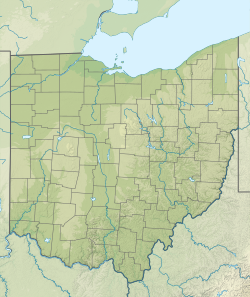Van Buren State Park (Ohio)
Currently, Van Buren State Park (Ohio) is a topic that has captured the attention of a wide public due to its impact on different areas of society. Since its emergence, Van Buren State Park (Ohio) has generated debates and discussions ranging from its relevance in history to its influence on people's daily lives. In this article, we will explore in detail the most significant aspects related to Van Buren State Park (Ohio), analyzing its origins, evolution and the implications it has today. Additionally, we will examine how Van Buren State Park (Ohio) has shaped different aspects of culture, politics, economics and technology, showing its influence in different contexts over time.
| Van Buren State Park | |
|---|---|
 Van Buren Lake | |
| Location | Hancock County, Ohio, United States |
| Coordinates | 41°08′00″N 83°38′39″W / 41.13333°N 83.64417°W |
| Area | 296 acres (120 ha) |
| Elevation | 751 feet (229 m) |
| Established | 1950 |
| Administered by | Ohio Department of Natural Resources |
| Designation | Ohio state park |
| Website | Van Buren State Park |
Van Buren State Park is a public recreation area surrounding 45-acre (18 ha) Van Buren Lake in Hancock County, Ohio, in the United States. The state park covers 296 acres (120 ha) abutting the southern boundary of the village of Van Buren and offers fishing, boating, camping, hiking, and other recreational activities.
History
The process of creating the park began in 1939 when a dam was built over Rocky Ford Creek creating Van Buren Lake as part of a private wildlife preserve. The lake and preserve were transferred to the state of Ohio for use as a state park in 1950.
Ecology
Van Buren State Park is in a rich agricultural area. Northwest Ohio is part of the Interior Plains region of North America. The land is largely flat with a few hills that are a remnant of the last ice age. Beneath the topsoil lies a layer of dolomitic limestone.
The park is in a small patch of woods surrounded by thousands of acres of fields of corn, wheat and soybeans. The land was largely forested before it was cleared by farmers. A small patch of woodland, made mostly of beech and sugar maple trees, remains at Van Buren State Park. Typical woodland mammals found in the park include white-tailed deer, red fox, red squirrel, skunk, and opossum. Bird species include the cowbird, woodcock, eastern bluebird, short-eared owl and eastern meadowlark. The park is also home to garter snakes and spring peepers. Wildflowers in the area include chicory, spring beauty, Dutchman's breeches, daisy fleabane and thimbleweed.
Activities and amenities
The park features boating for hand- and electric-powered water craft, trails for hikers, mountain bikers and horseback riders, and primitive, full-service and equestrian camping. Fish species found in the lake include largemouth bass, carp, bluegill, channel catfish, bullhead and crappie. Hunting is limited to bowhunting.
References
- ^ a b "Van Buren Lake State Park". Geographic Names Information System. United States Geological Survey, United States Department of the Interior.
- ^ a b c d "Van Buren State Park". Ohio Department of Natural Resources. Retrieved November 11, 2020.
- ^ "Van Buren Lake". Ohio Department of Natural Resources Division of Wildlife. Archived from the original on July 31, 2018. Retrieved November 11, 2020.
External links
Van Buren State Park.
which includes
Van Buren State Park.
- Van Buren State Park Ohio Department of Natural Resources
- Van Buren State Park Map Ohio Department of Natural Resources

